Team Development
Team Development can take many different shapes and forms, depending on what you want to achieve, the function of the team, the stage they are at in their development etc.
Below we have outlined the format of a two day programme for an intact team who are looking to achieve the following:
-
To identify challenges and opportunities they face over the next few years.
-
Prioritise and focus on one or two key challenges or opportunities.
-
Understand what makes each member of the team tick.
-
Identify what triggers conflict for each member of the team.
-
How members of the team change when in conflict.
-
How to manage conflict to best effect
-
What strengths exist within the team?
-
What things they tend to overdo within the team and the impact of these.
-
What strengths/behaviours the team needs to adopt to meet their Challenges/Opportunities.
-
How they move from where they currently are to the desired behaviours identified.
Understand what makes each member of the team tick
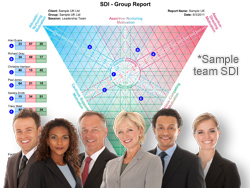
Use the SDI to identify the MVS of each team member.
Break into MVS groups and create practical activities and questions which will help understand the make-up of the team.
Consider the learning from above exercises to work out where the MVS of key stakeholders/clients/suppliers etc are and how members of the team may need to adapt their style to suit specific stakeholders.
Conflict Triggers
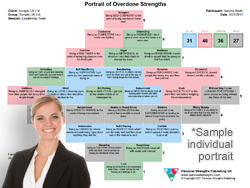
Get individual team members to identify what triggers conflict for them & why.
What impact does the conflict have on them?
Team members consider which strengths when overdone, by others, can trigger conflict for them.
Which strengths they sometimes overdo that may cause conflict for others.
Capture the triggers that could cause conflict for each MVS group and relate this to stakeholders etc.
Behaviour Changes in Conflict
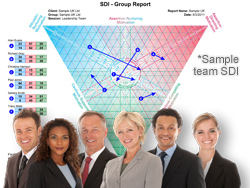
Identify how each team members behaviour changes when in conflict.
How would we know they are in conflict?
What they want to get them out of conflict.
The absolute do’s and don’ts of approaching them when in conflict.
Recognise how we can- Anticipate-Prevent-Identify-Manage-Resolve conflict with each other, and our stakeholders more effectively.
Identify conflicts that we feel have been resolved but are really still ongoing and the cost involved.
Strengths of individuals in the team
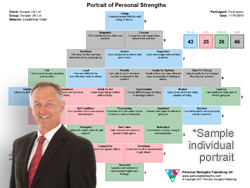
Use the Portrait of Strengths to identify the top 6 strengths of each team member.
Understand what why each strengths is important to them.
What each strengths actually means to them (we all have different definitions/perceptions of specific strengths & behaviours).
How they apply their top strengths and the benefit it brings.
Learn from each other and identify situations where individuals need to borrow strengths from lower down in their portrait.
Where would team members benefit from partnering with each other?
Hear from team members the strengths they value in each other and why.
The strengths required from the team to achieve Challenges/ Opportunities
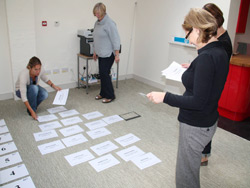
Get the team to create the strengths profile required to meet the challenges/opportunities agreed.
Define what the top 6 strengths will ‘ look like ‘around here’.
The difference they will make if applied.
What they would look like if taken too far and overdone.
Compare the strengths required with the composite strengths of the team.
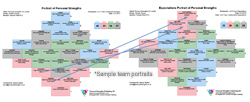
Agree a development plan of how to achieve the team change in behaviour.
Place the agreed profile on the wall of the key meeting room for future reference.
Agree regular reviews and follow up.
Want more information? – Contact us




